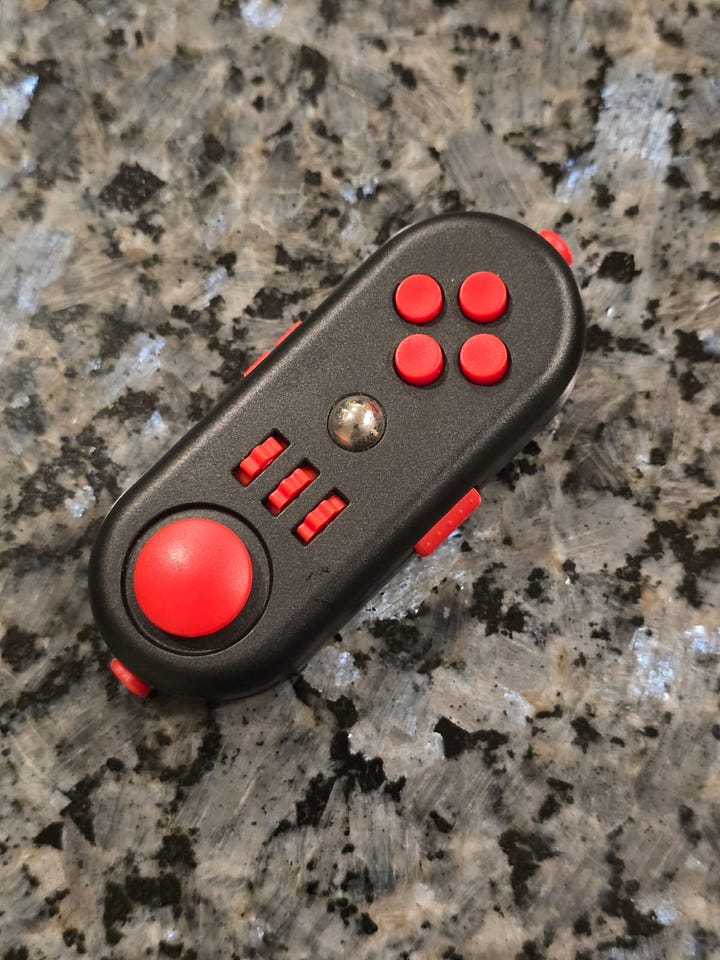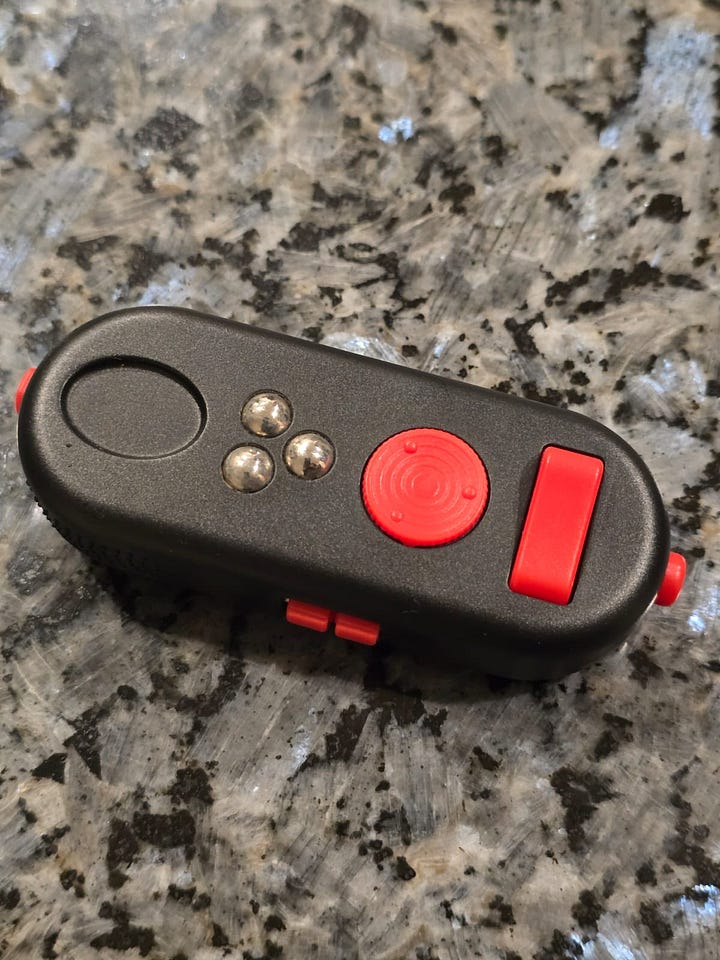Welcome to Better Short - Ideas expressed in 500 words or less. You can find other essays here.
I am a hair-toy-er; a teeth gnawer; chair swiveler; a leg shaker. I fidget, a lot. To think, I need to walk, or at least, fidget in place.
A few months back, I bought this weird plastic pill from Lazada - a toy to fidget with. My fingernails could only take so much abuse.


It’s now my Wilson, always in my backpack, sitting by my side in cafes, ready to be pressed, prodded and clicked (weird looks notwithstanding). This is a little plastic playground of tactile sensations. The big switch feels ridiculously good. Those little steel knobs click with the exact sensation of popping a bubble wrap. Makes me moan.
Bring me more tactile things!
I had a DSLR phase. But it’s been almost two years since I took out my fancy Nikon Mirrorless camera for a spin (I plan to start again).
My smartphone can now shoot moon craters and my lazy ass can’t be bothered to carry a bulky camera on trips anymore. But when I dusted off the Nikon the other day, wrapped my hands around its perfectly designed grip, played with the dials, and pressed that shutter button, it felt like I freeze-framed the world! Klchhk. Tssskch. Sclrattch?
It felt cathartic!
In an automatic car, my hands search for the inevitable stick shift movement, resistance, and slotting, which never arrives. The journey is filled with hundreds of tiny anticlimactic moments every time the engine revs up far enough and the car shifts on its own.
The Tesla internal aesthetic of ‘everything is a screen’ isn’t for me. I need the dials and the buttons. What’s the sound of tiny gear controls turning? I have no language to explain much of my tactile senses anymore.
Touch screens have deprived us more than we think.
Tactile things feed good and make us feel good:
Sensory grounding: Evolution has hacked us into tactile meat bags. Your skin is a bed of millions of touch receptors (5 million!). Sensory inputs shape your mental model of the world—the more inputs, the richer your immersion. In cafes, I can smell and taste the coffee, soak in the cozy visual ambience, hear the soft music, and feel that wobbly table when I place my cup. Taking a crowded Mumbai local would be an even more complete immersion.
Dopamine - Pleasant tactile experiences stimulate nerve fibers called c-tactile afferents which release dopamine and oxytocin, creating feelings of social bonding and pleasure.
Clear, haptic feedback reduces anxiety - Tactile (haptic) feedback significantly reduces task completion anxiety compared to visual-only feedback. Without immediate tactile confirmation, our brains briefly enter anxious states: "Did the action happen?".
Embodiment and reality - We still refuse to accept that our actions in the digital world are real because humans view actions mediated by physical touch as more "real" (Alone Together). The absence of tactility in digital interactions causes a psychological disconnect. Swiping or typing on a screen feels less authentic to our embodied brains.
Monopurpose interactions - The idea that there’s a button which does one thing is enormously appealing in the era of infinite distractions and where actions are pixels generated on the same screen.
I see a rise of retro aspects in technology again. New devices with knobs, retro styled cameras and rise of funky looking mechanical keyboards are getting popular again. Perhaps when we make our AI first devices, we’ll remember to add some dials and buttons to make it look more like the pill I bought.
Need more clicks, clacks, whirs, pops, clinks, ticks, plinks, ploffss, katchacks, zirriks….
Better Short,
Tyag








OMG! This resonates at so many levels.
…makes sense…our screen time turns more virtual/false and our body needs a balance of the physical real…